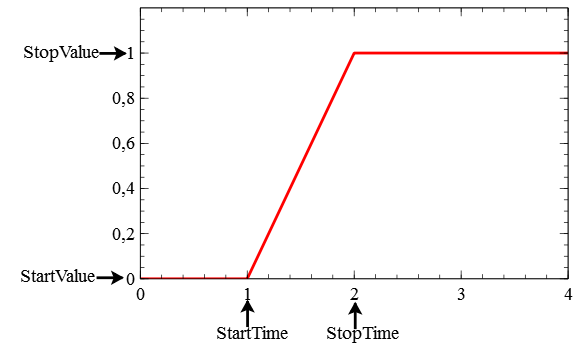|
Marine systems simulation
|
|
Marine systems simulation
|
Ramp signal.
 Collaboration diagram for Ramp:
Collaboration diagram for Ramp:This is a ramp signal. The user specifies start parameters (time/value) and stop parameters (time/value). A line segment between these two points results in a linearly increasing or decreasing function, between the initial and final point in time.

This function has no inputs.
| Name | Width | Description |
|---|---|---|
| Out | <PortWidth> | The ramp output signal |
| OutDot | <PortWidth> | The derivative of the ramp output signal |
| Name | Width | Description |
|---|---|---|
| PortWidth | 1 | The number of elements in the signal. |
| StartValue | <PortWidth> |
The start value of the output port. This may either be a scalar, or a comma separated list referring to the different elements of the signal. |
| StopValue | <PortWidth> |
The stop value of the output port. This may either be a scalar, or a comma separated list referring to the different elements of the signal. |
| StartTime | <PortWidth> |
The time to start the step. This may either be a scalar, or a comma separated list referring to the different elements of the signal. |
| StopTime | <PortWidth> |
The time to stop the step. This may either be a scalar, or a comma separated list referring to the different elements of the signal. If this is negative, this is a true step function with unlimited duration. If it is larger than zero, it is a pulse function, which goes back to the StartValue after the StopTime. |
There are no initial conditions for this function.
This SimObject is referred to as Src/Ramp